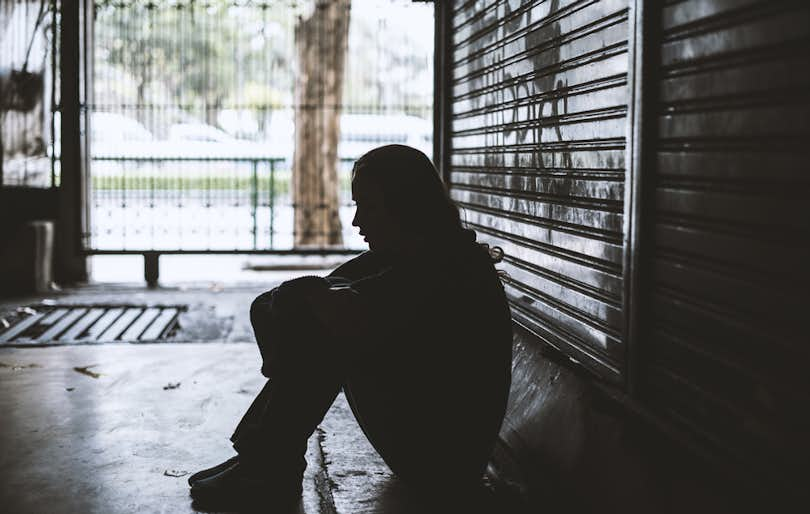
The U.S. economy is the largest in the world. Despite the country's wealth, however, the U.S. still struggles to provide enough housing for its citizens, with higher rates of homelessness than other developed countries.
Roughly 582,000 Americans experienced homelessness in 2022, according to the Department of Housing and Urban Development. The lack of affordable housing options, a rising cost of living, and other societal issues have played a role in the nation's homelessness crisis.
Below, we'll break down seven factors contributing to the country’s persistent problems with homelessness.
1. Homes are unaffordable in areas that struggle with homelessness
One of the biggest causes of homelessness is the price of housing. A new study by Home Bay, a real estate education platform, found a strong correlation between high home values and homelessness in major U.S. cities.
In an analysis of the nation's 50 largest metropolitan areas, the study found that cities with above-average home values also had higher rates of people living in homelessness. The state of California was singled out as a prime example, with its cities having the highest home prices and highest rates of homelessness.
At the city level, San Jose leads the pack on both fronts. It has the country's highest average home value at more than $1.3 million and the highest rate of homelessness — 637 people living without housing for every 100,000 people in the city.
Even if individuals experiencing homelessness aren't ready to buy a home, increasing property values often lead to rising rental prices, making housing of all types less affordable.
There are other contributing factors to the high rates of homelessness in California. The temperate weather and available social programs make it more accessible to people without homes. But it’s impossible to ignore the impact of the high cost of housing.
2. Rental prices are on the rise
Similar to home values, areas with expensive rents are especially likely to have high rates of homelessness. And in 2023, renters face increasingly high costs nationwide, particularly in major cities.
In the 12 cities with the highest rates of homelessness, renters pay an average of $2,274 per month — in comparison to $1,596 a month in cities with lower-than-average homeless rates, according to Home Bay's findings.
Los Angeles and San Diego, two of the most expensive cities for renters, rank in the top 10 for rates of homelessness. Plus, three other cities in the top 10 — San Jose, Denver, and Seattle — have the fastest-increasing rental prices in the country. The rise in prices means individuals struggling to afford housing in these areas are especially likely to slip into homelessness.
3. Income isn't keeping up with housing costs
Housing prices continue to grow faster than Americans' incomes. Since 1985, the average annual income has tripled, but it still lags 7% behind the growth in rent prices.
Rent prices have not only outpaced incomes, but inflation, too. If rent prices grew at the same rate as inflation, the average rent today would be $939 a month, rather than the actual average of $1,163.
Home prices have also outpaced inflation. If home prices grew at the same rate as inflation since 1970, the median home price today would be $177,788 – rather than $408,100.
The takeaway is that housing prices have grown faster than other important economic indicators. That means that — even among Americans who have seen their incomes rising at the usual pace — many people are less able to afford housing than they would have been in the past.
4. High health care costs
Health care costs are another contributor to homelessness in America. The U.S. spends twice as much of its GDP on health care as other developed countries, according to data from the Commonwealth Fund.
The high cost of health care and insurance means many Americans skip routine check-ups and preventative care. In fact, 24% of retirees say they've skipped medical treatments to save money, and 18% of retirees have outstanding medical debt.
This, in turn, can lead to more severe, and more costly, health issues down the road that can stop a person from being able to afford their mortgage or rent.
5. Discrimination can contribute to homelessness
Despite legal protections given in the Home Mortgage Disclosure Act of 1975, institutional racism continues to play a role in access to housing for marginalized communities.
Black Americans are twice as likely to be rejected for a mortgage than white Americans, even with similar incomes. Other reports have found that Black Americans pay more in rental costs.
The result is a disproportionate rate of homelessness among Black Americans, who make up about 13% of the U.S. population but 40% of the homeless population.
6. Inadequate space leaves many without shelter
Family conflict, including domestic violence, is a leading cause of homelessness. People fleeing spousal abuse and LGBTQ youth are particularly vulnerable populations facing homelessness.
While many cities offer resources and shelter for homeless populations, there isn’t always enough space for everyone in need. According to the National Network to End Domestic Violence, more than half of victims' unmet requests for services are for housing and emergency shelter.
7. Not enough resources for mental health and addiction care
U.S. housing officials estimate that 36% of those experiencing chronic homelessness have a history with substance use, mental health problems, or both. These issues can make it harder to hold a job, making one more at risk of losing their income or housing.
If a person loses their job and home and doesn't have a strong support network, the search for food or short-term shelter becomes a priority, making less time for long-term planning regarding employment and stable housing.
Accessing the treatment needed to get back on track is harder than one might imagine. About "43% of U.S. adults who say they needed substance use or mental health care in the past 12 months did not receive that care," a 2022 report found.
This article was first published on Clever Real Estate.
